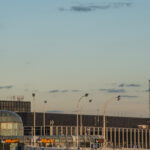A.M. Best’s analysis of the damages caused by the earthquake that struck Nepal on April 25, 2015, describes the “significant property damages and fatalities in the Himalayan country.” However, no accurate assessment of then insured losses has yet been completed “as rescue work and assessment are still under way,” best’s report said. It added that “although this devastating earthquake is expected to bring significant economic and human losses, insured cost is expected to stay at a minimal fraction of total economic loss due to low insurance penetration in the area.”
Best said that from a global perspective, it believes the quake is “not expected to have a major impact on the current reinsurance market.” It could, however, have “an adverse impact on both local and some regional players due to significant costs from property and motor losses brought on from the powerful quake.”
Best indicated that “most of the small-sized carriers in Nepal will be challenged to absorb this relatively huge catastrophe loss and its impact on their operating results. Additionally, some regional players, such as Indian companies with life, non-life and reinsurance business operations in the quake affected areas, are also expected to face recurred losses from the event.”
On May 6, 2015, Best commented that the ratings of General Insurance Corp. of India, and Royal Insurance Corp. of Bhutan Ltd., remain unchanged. Best said: “Their net losses after reinsurance recovery are expected to be small relative to their capital and surplus, although their operating results will be adversely influenced by the quake. The event is not expected to pose a significant impact on the companies’ risk-adjusted capitalization.”
In addition Best’s report pointed out that “Nepal has a relatively small insurance market with total non-life premiums of about $102 million in 2013. The market consists of 16 non-life and one composite insurance company. Non-life insurance penetration as a percentage of gross domestic product stays below 0.5 percent in Nepal. Motor and property are the two major non-life lines of business in the area.
“Earthquake cover is mandatory and is provided in an extension of fire policies. Earthquakes are a major natural peril risk affecting Nepal. The Kathmandu Valley is particularly vulnerable, and has been hit by some severe earthquakes in the past.
“The most recent earthquake in Nepal devastated properties and infrastructures, with the capital city of Kathmandu bearing the brunt of the quake. Neighboring regions of India, Tibet, and Bangladesh were also affected by the earthquake. Most of the loss claims are expected to come from Kathmandu.
“Large motor insurance claims are anticipated due to the quake’s extensive damages on vehicles in the area. As a popular tourism and mountain trekking location, the earthquake is also expected to bring travel related loss claims from tourists.
“Nepal’s life sector is also expected to be affected by this event given the rising death tolls now estimated at over 7,500 as of May 6, 2015. Nepal’s life premiums amounted $175 million, accounting for about 63 percent of total insurance market share in 2013.”
Best also pointed out that the “Himalayan Mountain range area is one of the seismically active regions in the world. It is important for not only Nepal, but for other countries in the area to enhance risk mitigation efforts for this catastrophe prone region. Improvements in building standards and codes, strengthening of catastrophe management and earthquake modeling are among areas for further development in the region.”
Source: A.M. Best
Topics Catastrophe Reinsurance AM Best Market
Was this article valuable?
Here are more articles you may enjoy.


 Update: Fannie Mae Guidelines Raise Concerns, Could Bar ACV Coverage for Homes
Update: Fannie Mae Guidelines Raise Concerns, Could Bar ACV Coverage for Homes  Berkshire’s Jain on Cyber: ‘The Mindset Should Be You’re Not Making Money’
Berkshire’s Jain on Cyber: ‘The Mindset Should Be You’re Not Making Money’  Pfizer Agrees to Settle More Than 10,000 Zantac Cancer Lawsuits
Pfizer Agrees to Settle More Than 10,000 Zantac Cancer Lawsuits  Cracks in O’Hare Columns Aren’t Insured Property Damage, Just Bad Product – Court
Cracks in O’Hare Columns Aren’t Insured Property Damage, Just Bad Product – Court 

